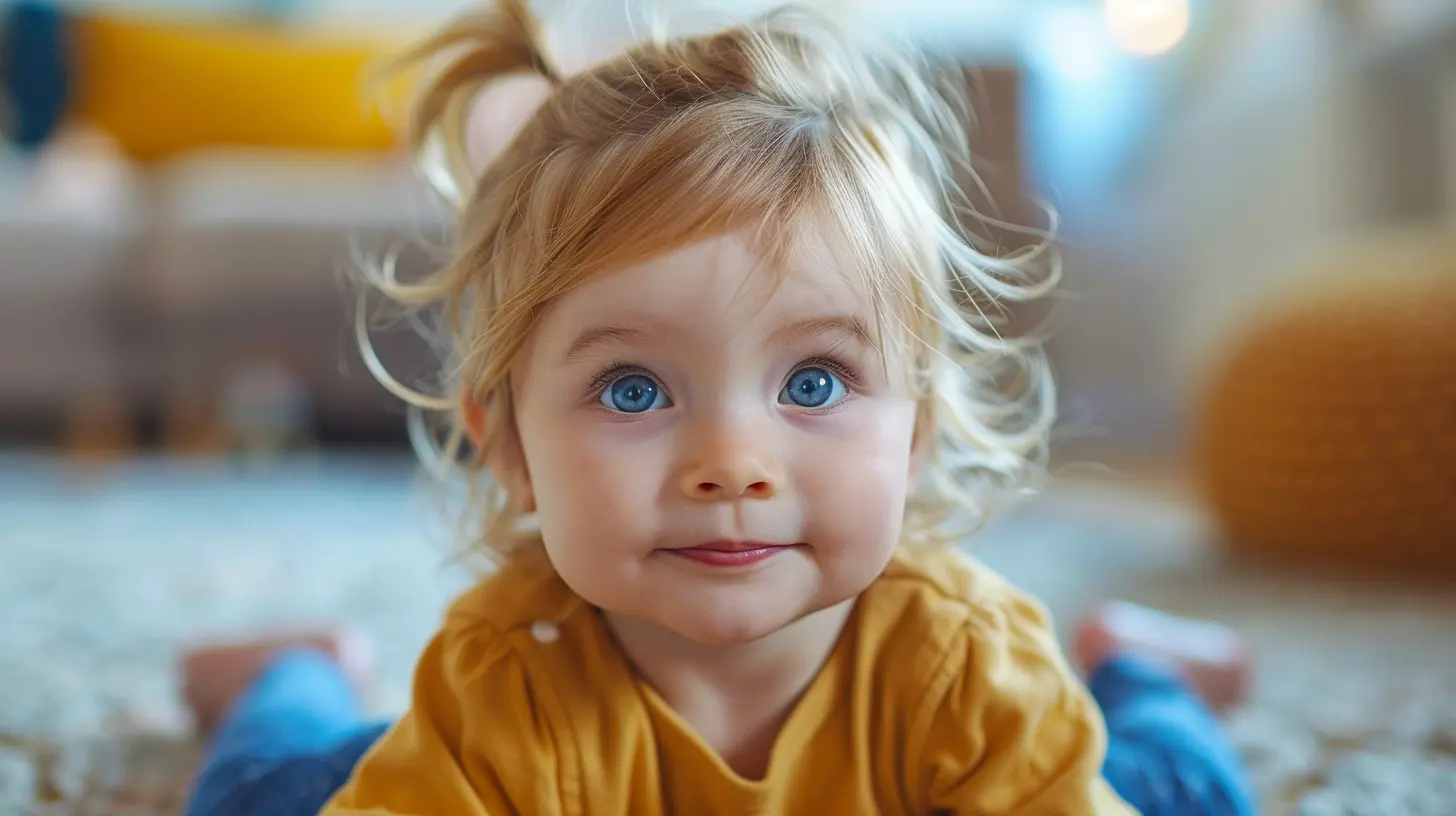Potty Training Myths Debunked: What You Really Need to Know
14 September 2025
Potty training—it’s one of those parenting milestones that everyone has an opinion on. If you’ve been Googling or asking friends for advice, chances are you’ve run into a mountain of conflicting information. Some say kids should be trained by age two, while others swear that waiting longer ensures fewer accidents.
So, what’s true and what’s just another outdated myth? Let’s break down the most common potty training misconceptions so you can approach this big step with confidence (and maybe a little less stress).

Myth #1: There’s a Perfect Age to Start
Reality: Every Child Is Different
Some well-meaning relatives might say, "I trained all my kids by 18 months!"—and good for them! But here’s the truth: there’s no magic age when every child is suddenly ready to ditch the diapers.Most kids are ready for potty training between 18 months and 3 years, but the key is looking for signs of readiness, not just a birthday on the calendar. These signs include:
- Staying dry for longer periods
- Showing interest in the toilet or big-kid underwear
- Telling you when they have a wet or dirty diaper
- Hiding to poop (yep, that little corner they run to means something!)
Rushing into training before a child is ready often leads to frustration—for both of you! Rather than focusing on age, pay attention to their cues.

Myth #2: Potty Training Should Be Done in Three Days or Less
Reality: A Timeline Isn’t One-Size-Fits-All
Three-day potty training programs are super popular, promising quick success and minimal mess. And while some kids do pick it up fast (lucky parents!), others need weeks—or even months—to master it. That’s totally normal.Think of it like learning to ride a bike. Some kids take off on their first try, while others wobble and need a lot of practice. Potty training is the same way—it’s a skill, not a race.
If your child doesn’t master it in three days, don’t panic or assume you’ve done something wrong. Just keep encouraging them and stay patient.

Myth #3: Once You Start, You Can’t Go Back
Reality: It’s Okay to Take a Break
Some parents worry that if they start potty training and then stop, they’ll confuse their child or make it take longer. But the truth? Sometimes taking a break is the best move.If your toddler is resistant, freaking out at the sight of the potty, or having accident after accident with no progress, it might mean they’re just not ready yet. And that’s okay! Waiting a few weeks (or even months) before trying again won’t ruin their progress.
Potty training should be a positive experience, not a power struggle. If it’s becoming a battle, hit pause and try again later.

Myth #4: Nighttime Training Happens Right After Daytime Training
Reality: Nighttime Training Takes Longer
Daytime potty training and nighttime dryness are two completely different milestones. Just because your child is accident-free during the day doesn’t mean their little bladder is ready to hold it all night.Many kids still need diapers or pull-ups at night for months or even years after they’re potty trained during the day. And this isn’t a sign of failure—it’s just biology. Some children’s bodies take longer to develop the ability to wake up when they need to go.
Signs that your child might be ready for nighttime training include:
✅ Waking up dry several mornings in a row
✅ Asking to use the bathroom in the middle of the night
✅ Fewer and fewer wet pull-ups in the morning
Give it time, and don’t stress if they still need nighttime protection for a while!
Myth #5: Punishments Help Speed Up the Process
Reality: Positive Reinforcement Works Best
Potty training accidents are inevitable—just like spills when kids learn to drink from a cup. But punishing them for accidents can actually make things worse.Kids don’t have accidents on purpose. Scolding or shaming them could make them anxious about using the potty, leading to withholding behavior (which can cause constipation and even more potty problems!).
Instead of punishment, focus on positive reinforcement:
🎉 Give lots of praise when they use the toilet
🏆 Use a sticker chart or small rewards for motivation
👏 Stay calm and reassuring when accidents happen
The more relaxed and encouraging you are, the smoother the process will be.
Myth #6: Boys Take Longer to Train Than Girls
Reality: Readiness, Not Gender, Matters Most
You may have heard that boys are harder to potty train than girls, but this is more of a general trend than a hard rule. Some studies show girls tend to train a little earlier, but the difference is small—and every child is unique.What matters more than gender? Readiness signs, personality, and motivation. Some boys train super early, while some girls take their sweet time. It’s all individual!
Myth #7: Pull-Ups Confuse Kids and Delay Training
Reality: They Can Be Helpful (If Used Right!)
Some parents swear by training pants (like pull-ups), while others think they’re just glorified diapers that slow down potty training. So what’s the deal?Pull-ups can be useful—especially for naps, nighttime, and outings—because they give your child the ability to pull them up and down like underwear. But if you rely on them all the time, kids might not feel the same motivation to use the toilet.
A good compromise? Use pull-ups strategically while encouraging underwear during the day as much as possible. That way, your child gets the best of both worlds.
Myth #8: Kids Should Wipe Themselves Right Away
Reality: Wiping Takes Practice (and Patience!)
Potty training doesn’t stop at getting them to use the toilet—they also have to learn how to wipe themselves, which is a whole skill in itself. And let’s be honest, wiping well takes coordination and patience (even some adults struggle with this!).Most kids need help wiping after poops for a while, sometimes even into kindergarten. Encourage them to try, teach them proper techniques, and always double-check to avoid accidental messes.
Myth #9: If They Resist, They’re Just Being Stubborn
Reality: There Might Be a Reason Behind It
If your child refuses to use the potty, it’s easy to assume they’re just being strong-willed. But sometimes, resistance means something deeper is going on.Common reasons for potty training resistance include:
🚽 A fear of the toilet or flushing sounds
😖 Past negative experiences (like a painful poop)
😕 Feeling pressured or stressed about the process
🔄 A big life change (like a new sibling or move)
Instead of forcing it, try figuring out why they might be resisting. A little patience and reassurance can go a long way.
Final Thoughts
Potty training is one of those parenting journeys that looks different for every child. There’s no magic formula, no perfect timeline, and certainly no need to stress over outdated myths.The most important thing? Follow your child’s cues, stay positive, and be patient. Eventually, every child gets there—no matter how long it takes.
So breathe, stock up on extra underwear, and know that this phase won’t last forever. You've got this!
all images in this post were generated using AI tools
Category:
Potty TrainingAuthor:

Maya Underwood
Discussion
rate this article
1 comments
Betsy Harris
Thank you for addressing these common potty training myths! It’s refreshing to see evidence-based information that helps parents navigate this challenging phase. Understanding the importance of patience and individual readiness truly makes a difference. Your insights will undoubtedly ease the stress for many families. Looking forward to more articles like this!
September 23, 2025 at 4:50 AM

Maya Underwood
Thank you for your kind words! I'm glad the article resonated with you and will help families during this important phase. Stay tuned for more evidence-based insights!


